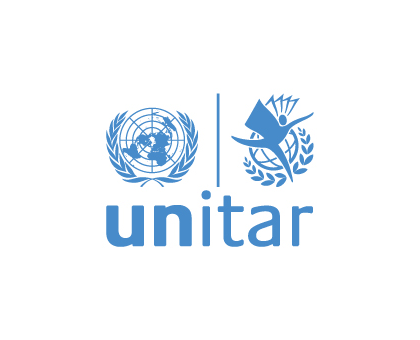
Introduction to the Use of Geospatial Information Technology (GIT) for Sustainable Development in Nigeria
The project “Strengthening Capacities in the Use of Geospatial Information for Improved Resilience in Asia-Pacific and Africa.” (2021-2024) intends to develop sustainable capacities and implement tailored geospatial solutions to improve policy and decision-making processes in Disaster Risk Reduction. With the support of NORAD, UNOSAT partners with the governments to develop innovative capacity development solutions and geospatial services, leveraging technological advances and innovation for improved decision making in Disaster Risk Reduction, Climate Resilience, Environmental Preservation and Food Security in the eight target countries: Bangladesh, Bhutan, Fiji, Lao PDR, Nigeria, Solomon Islands, Uganda, and Vanuatu. The project’s primary focus in Nigeria is the geospatial capacity development for environmental conservation and the nominated focal institution for implementation in Nigeria is the Federal Ministry of Environment.
Geographic Information Systems (GIS) and remote sensing are state-of-the-art technologies that have revolutionized our approach to disaster risk management and environmental monitoring. These tools harness the power of geospatial data and satellite imagery to provide invaluable insights into the natural world and its dynamic processes. GIS allows us to collect, organise, and analyse geospatial information, enabling us to understand the spatial relationships between different elements of our environment. This knowledge is essential for identifying vulnerable areas, assessing the potential impact of natural disasters, and planning effective disaster response strategies. GIS also facilitates the integration of diverse datasets, such as land use, infrastructure, and population density, to create comprehensive risk assessments. Remote sensing provides real-time and historical Earth observation data, including climate patterns, vegetation health, urban growth, and other Earth surface processes.
In Nigeria, GIS and remote sensing are essential in understanding and addressing the needs on natural resources management and climate change impacts, mitigation, and adaptation. This introductory training will focus on the use of free and open-source software and exploring various sources of geospatial data for sustainable development applications. It will equip participants with the skills necessary to acquire, process, analyse, and visualise remote sensing data effectively and integrate various geospatial information in GIS to derive valuable information that can support environmental conservation and disaster risk and resilience.
At the end of the course, participants should be able to:
- Describe the importance of Geospatial Information Technology (GIT) for Sustainable Development, particularly in disaster risk management and environmental monitoring
- Recall the basic methods and functionalities of a GIS software (QGIS)
- Gather free geospatial data and satellite imagery available from the web
- Monitor environmental changes using timeseries analysis of satellite imagery
- Conduct flood exposure assessment using satellite imagery
- Prepare decision support maps to support disaster risk management operation
The course introduces GIS and remote sensing for sustainable development, with a particular focus on environmental monitoring and disaster risk and resilience. The contents of this training will begin with introductory modules on GIS and remote sensing, followed by exploring the available sources of data from the web, with the final modules demonstrating the GIS and remote sensing applications that were made possible with these new tools and available data. The applications will focus on selected challenges in Nigeria, namely, forest monitoring, surface water dynamics, and flood exposure analysis.
This is a full-time, face-to-face course with lectures, GIS and image processing lab exercises using satellite imagery and real case scenarios (60% lab exercises, 40% lectures and discussions), and collection of geospatial data from the web. This course is divided into 6 modules. The average workload is likely to be around 35 hours. The course is designed in a way to have a balanced approach between theoretical and practical teaching methods consisting of presentations, live demos, videos, interactive sessions, and lab exercises. At the end of the course, UNITAR-UNOSAT will set up a community of practice platform to maximise the learning experience of participants and to provide all required technical backstopping and assistance to training participants during and after the training.
The course is designed to accommodate participants selected by the Federal Ministry of Environment and the Nigerian Meteorological Agency without basic knowledge in GIS and remote sensing from a variety of backgrounds and professional experiences. It is recommended that respective departments should select participants who are willing to develop and apply the skills learnt from this capacity building exercise to their daily workflow to enhance project service delivery within the ministries.
Lab exercises will be performed using QGIS, EO Browser, and other online tools and platforms.

